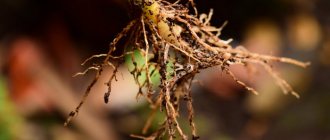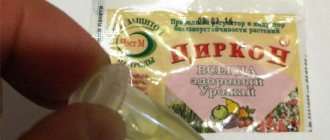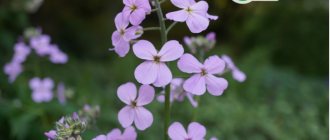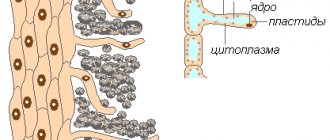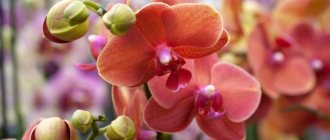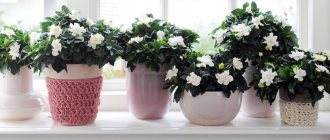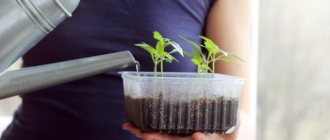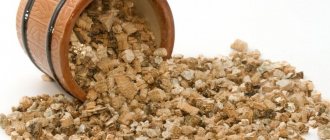In many homes there is at least one jar of honey. This is a healthy treat not only for people. The product has antibacterial and antifungal effects, which is why it is used for rooting plants. Fertilizers are also prepared with it. Below are some incredible ways to use honey in your garden.
Natural honey is a unique product used as a fragrant delicacy and a source of health. It contains over 100 valuable components that are necessary for the human body. Approximately 80% are carbohydrates - fructose, sucrose and glucose. The proportions of these components may differ in different varieties. Honey is also effective for the garden.
Honey fertilizer
To prepare honey fertilizer, 1-2 tbsp is required. l honey, which is added to water (2 liters). Shake everything thoroughly and use it to water the plant. If the product is used for potted plants, then it is poured until water seeps out from the bottom. This sweet fertilizer is used once every 2 weeks.
This honey fertilizer is useful to regularly use for flowering and fruit-bearing annual plants. Its use allows you to obtain aromatic and sweet fruits. But be careful: tasty fertilizer may attract insects. Ants especially love sweet honey.
Fertilizer for indoor flowers
To prepare the solution, you need to dissolve 1 tsp. honey in a glass of water (for saturated density) or in 1 liter of water (for weak concentration).
Features of honey feeding:
- Fertilize indoor plants regularly.
- It is better to apply fertilizer in small quantities, as excessive fertilizer can harm the flowers.
- Plants that were recently transplanted into the ground can be fed after 2 months.
- If the crop is sick or weakened, the concentration of the solution decreases because the root system will not be able to absorb nutrients.
- Before applying the subcortex, the plant needs to be watered 1-2 hours before.
- Preventive procedures should be carried out in spring and summer, when active growth is observed.
Fruit fly trap
Fruit flies are small pests that many gardeners struggle with. You can create a trap for them. To do this you will need rotting fruit, honey and apple cider vinegar.
Honey and fruit should be placed in a jar and a little vinegar should be added there. The container is covered with cellophane and wrapped with an elastic band. You need to make a lot of holes in the cellophane with toothpicks. Such a trap should be kept in areas where flies live to lure them.
Is it possible to water flowers with salt water?
Vegetables in the garden are often watered with salt water. For example, onions, to rid it of onion flies. For root vegetables (beets, carrots, radishes), this feeding is useful because it improves their taste.
For indoor plants, salt is more harmful than beneficial. If you regularly use a saline solution, the soil will become salty, and the flowers will begin to experience moisture deficiency, despite watering. The fact is that the roots cannot absorb salt water, unlike ordinary water. At the same time, the metabolism in plant tissues will deteriorate, and the flower will begin to slowly die.
Honey hormone
Plants are often grown in the garden from cuttings. For success in this matter, rooting hormone is used. Instead of a special product, you can use honey. The product improves root growth. Thanks to its antibacterial and antifungal effects, honey eliminates rot and infections from cuttings. This product also provides a safe environment for roots to grow.
Honey (2 tbsp) should be added to boiling water (2 cups), and let the product cool. The cuttings are dipped into water and left there. Rooting occurs after 1-3 weeks.
Honey for seedlings
When growing seedlings, gardeners are concerned about the quality of the plants and the prospects for obtaining a high yield.
Several years ago, when preparing tomato seeds for planting, I decided to use potato juice to soak them. It contains a large number of different microelements that would help the seedlings grow strong and healthy. To do this, I chose two medium-sized potatoes and put them in the freezer compartment of the refrigerator for a day. After defrosting, the potatoes became soft and the juice was easily squeezed out of them. Place a cloth napkin in a saucer, place seeds on it and moisten the cloth with potato juice.
The seedlings grew together, their stems were thicker than when soaked in ordinary water. Before planting in the greenhouse, the seedlings stood in pots like thirty-three heroes - half a meter high with thick, finger-thick trunks. When planting, I didn’t even put it in the ground, but buried it vertically.
I tried honey and aloe juice as homemade growth stimulants when propagating violets. Usually I put them in water, waited for the roots to appear, and then planted them in containers. In solutions with a dosage of one teaspoon of honey or aloe juice per glass of water, roots appeared on violet leaves within 4–5 days, which is almost twice as fast.
This means that such solutions contain substances that stimulate cell growth and can also be used to soak seeds before planting. In addition, soaking seedlings of fruit trees and shrubs in such solutions during spring or autumn planting will certainly give a positive result. Many people propagate black currants by cuttings in the summer. Soaking them in natural stimulants is not difficult - they are always at hand.
Many gardeners know the importance of water for plant development. But not everyone knows that improper watering leads to disease and death of vegetables.
Experienced vegetable growers always have a supply of rainwater on their site, because it is healthier than well or tap water. To collect it, place a barrel under the drain, and next to it, just below it, another one, connecting it to the first tray for overflow. Watering with cold water causes stress in plants, so water from barrels, heated in warm weather, is especially useful when watering cucumbers, peppers, and eggplants. To better preserve moisture in the plantings, some time after watering, loosen the beds.
One of my favorite vegetables, cucumber, has a reputation for being sissy. For watering it requires warm (22-25 degrees) water. At air temperatures below +15 degrees, watering cucumbers is not recommended. In this case, loosening is carried out to a depth of 5-6 cm. When watered with cold water, the cucumbers stop growing, the set fruits fall off, and root rot occurs. They love sprinkling watering, but only in hot weather in the evening.
Tomato seedlings planted in the ground or greenhouse prefer rare but abundant watering. In greenhouses, high humidity should not be allowed, which not only promotes fungal diseases, but also reduces fruit set. Tomatoes need ventilation and watering at the root. Sudden temperature changes negatively affect flowering, fruit set and ripening.
Peppers and eggplants, like true southerners, are less demanding on moisture. However, irregular and insufficient watering can lead to the appearance of blossom end rot. In this case, ugly-shaped fruits are formed.
The queen of the garden - cabbage - requires a large amount of water to fill the heads of cabbage. When planting seedlings, I usually water at least a liter per plant in the first month, and then increase the dose to 5 liters. If your leaves turn bluish when watering, this indicates excess moisture. Sprinkler watering of cabbage is done in the morning and late evening. During the day, this can cause leaf scorch. For good plant growth, I prefer to water the cabbage 4 times a week.
Zucchini loves fertile soil and a sunny place. Thickened plantings reduce fruit set. In recent years, to plant zucchini, I have been making a small flowerbed, in which I place several buckets of humus, form a hole and place two seeds of three different varieties of zucchini in it. I water it 3 times a week on hot days. At the beginning of August, early zucchini appears, and until mid-September it is possible to collect up to 25–30 pieces from the flowerbed.
A winter with little snow will still affect the summer. If you want to get a good harvest, if possible, stock up on water at the end of spring and properly water your vegetable plants.
honey trap
Large holes in stems, leaves, fruits, and bulbs are a symptom of slug infestation. With the help of honey, the problem can be eliminated. You just need to install a special trap.
You should make a solution based on honey and yeast; they are dissolved in a small amount of water. The product is placed in a container that is stored on the ground so that slugs can easily get into it. The container must be deep so that pests do not escape. The container needs to be replenished every 2-3 days.
Zdrava-Mir
The secret to a luxurious indoor flower garden is simple: the plants need to be well fed, otherwise you won’t get either lush foliage or good flowering. A strict “diet”, when a plant lacks nutrients for a long time, usually leads to disease - because the plant does not have the strength to resist. But how to create a menu for green pets, taking into account their different tastes?
1). Almost all plants love sugar (and cacti generally have a great sweet tooth). Before watering, you can sprinkle 1 teaspoon of granulated sugar (for a pot diameter of about 10 cm) over the surface of the soil or give the plant some sweet water (0.5 teaspoon of sugar per 0.5 cup of water). 2). Feeding beautifully flowering plants with castor oil (1 teaspoon per 1 liter of water) during bud setting gives a good effect. 3). Wood ash is very useful for plants (both as nutrition and for the prevention of diseases). To prepare the ash solution, 1 tbsp. A spoonful of ash should be poured into 1 liter of hot water and left for 1 week, stirring occasionally. Watering with this solution is once every 10 days. 4). You can water the plants with this infusion: take the peels of pomegranates or any citrus fruits. Fill them with water and leave for a day. All! The nutritious infusion for watering is ready! 5). The immunity of indoor plants is greatly enhanced by spraying with an aspirin solution. One tablet dissolves in a liter of water. 6). Diluted aloe juice is also suitable for all common indoor plants. You need to dilute one teaspoon of juice in one and a half liters of water. 7). Ficus plants can be watered with sweetened water once a month. For one liter of water take one teaspoon of sugar. The leaves of these plants can be wiped with milk. This will give the plants shine and beauty. 8). Mushroom infusion will help your plants look healthy and beautiful. Soak the crushed edible mushrooms in a ratio of 1 to 1. After a day, drain the infusion and fill the mushrooms with water again. In a day, the mushroom water for irrigation will be ready. 9). Violets will like this feeding: take an ampoule of vitamin B12 and dilute it in a liter of water (settled, of course). You can feed violets with this vitamin twice a month. 10). Banana peel, which is rich in potassium, magnesium and phosphorus, can be used when replanting plants. Place a layer of finely chopped or minced banana peels on top of the drainage layer, cover it with soil and plant the plant.
Tweet
Tags: No tags
Soaking seeds in onion skins
A decoction of onion peels is a complete fertilizer. They can be used to water the ground and spray the entire plant for pest prevention.
Onion peel infusion is a proven composition against bacteriosis of cabbage and radishes. If the leaves turn yellow or black veins appear, water the plantings as if from a shower. Peel infusion prevents the appearance of bacterial tomato cancer. You should not only spray the tomato bushes, but also water them.
At the same time, the infusion serves as a good fertilizer for tomatoes. An infusion of onion peels is effective against aphids and spider mites. It is used in the fight against thrips, apple borers, codling moths, strawberry mites, plant bugs and caterpillars. The Colorado potato beetle is being combated; repels rodents.
Preparation of onion peel infusion:
Pour 250 g of chopped onion peel into 10 liters of cold water, let it brew for four days, strain through 2 layers of gauze and use for spraying bushes and trees.
Pepper seedlings: leaf diseases
Propagation of violets by leaf at home step by step
Radish planting before winter
Fill the crushed onion peel (up to half the bucket) with hot water (to the top). Infuse for one and a half days under the lid. Strain, dilute in half with water and use to irrigate plants against aphids and other blood-sucking insects.
Mix 7 g of crushed husks with 12 g of onion (pass through a meat grinder or chop in a blender). Pour 1 liter of hot water and leave for 7-8 hours in a sealed container, filter and immediately use for spraying.
For better use, add liquid or grated soap to the solution. It is recommended to use the solution once, since some insecticidal substances in them are destroyed during storage.
How to feed indoor flowers at home?
Man has always surrounded himself and will continue to surround himself with plants.
Pots with indoor flowers are placed at home and at work.
They add coziness to the room, give aesthetic pleasure, and purify the air.
Some people prefer exotic beauties, while others act the old fashioned way, breeding their favorites from leaves or stems borrowed from friends.
Violets, orchids, crassulas, cacti, palms, roses... they all need the help of their owner.
Watering alone is not enough; every indoor “inhabitant” needs good nutrition. How, when and what to feed your pets we will consider further.
Why do you feed indoor plants?
Nobody forgets about fertilizing garden plants, but when it comes to indoor plants, many people think that it is enough to water them regularly and replant them in larger pots.
In fact, no pot can replace the nutrients necessary for plant development.
Of course, if you use a new substrate during replanting, then its contents will be enough for the plant for a while, but not for long, about 1.5-2 months. Afterwards it is necessary to use fertilizing.
Important!
Not all plants need additional nutrition year-round; some of them have a dormant period, or simply put, “wintering.” At this time, it is not recommended to touch them so as not to disrupt the normal natural cycle.
When should you feed indoor flowers?
Plants are living beings and they will show themselves when they need feeding.
This can be determined by the following signs:
- development slows down significantly;
- some stems grow sharply, but they are very weak;
- the plant loses its brightness of color, becomes pale and drooping;
- no flowering;
- leaves fall off at the slightest touch;
- in severe cases, spots and signs of various diseases appear;
Note!
Provide timely assistance to your plants. If they do not have enough nutrients, their immunity will decrease and there will be a risk of contracting fungi and infections.
Today, in specialized stores you can find quite a lot of ready-made fertilizers for indoor plants, but there are many proven ways to feed them yourself.
Sugar for indoor flowers
Granulated sugar is one of the most popular means of feeding house plants.
It is unknown who discovered his abilities in this regard, but the fact that there is a result and it is simply amazing is an indisputable fact.
The secret of action is simple. Sugar breaks down into glucose and fructose. Plants do not need fructose, but glucose works real miracles.
It is a source of energy and actually revitalizes the plant. It begins to breathe more actively, absorb nutrients, etc.
And besides, with the help of glucose, the active “construction” of new cells begins. However, not all so simple.
In order for sugar to become a good feed and help a houseplant, a sufficient amount of carbon dioxide is necessary.
If there is a deficiency of it, everything will turn out exactly the opposite, and an ideal environment for the development of fungi, mold, rot, etc. will be created.
To avoid troubles, it is recommended to use EM preparations when feeding indoor plants.
Reference!
EM preparations are preparations containing various types of “effective microorganisms”. They are successfully used not only for crop production, but also in agriculture, everyday life, construction and even medicine.
Using sugar to feed your house plants is very simple. You can either dilute it with water (a tablespoon per 500 ml), or simply sprinkle it on the soil and then water it.
The second method gives more visible results. Sugar dissolves gradually and is absorbed more efficiently.
You can use this fertilizer no more than once a month, but it is better to create a schedule in combination with other folk or store remedies and follow it, alternating nutritional components.
Take note!
Instead of sugar, you can also use glucose, which is sold in tablet form at any pharmacy. It is diluted at the rate of one tablet per liter of water. There are no other differences in use compared to sugar.
Coffee flower food
Do you brew natural coffee?
Do not throw away the grounds - this is an excellent fertilizer for indoor plants. Simply mix the coffee residue with the soil.
This way it will become more loose and airy, the activity of beneficial microorganisms will be activated, and the root system will begin to receive more oxygen.
Indoor plants respond gratefully to coffee fertilizing, but this does not mean that you can pour the grounds into flower pots uncontrollably.
The fact is that this substance increases the acidity of the soil, and not every plant needs it, and even if it is needed, then in a certain amount.
The coffee grounds they love most are:
- lilies and daylilies;
- gladioli;
- azaleas;
- roses;
- most are evergreen, etc.
The remaining coffee grounds must be collected in a hermetically sealed container and when there is enough of it, mixed with the soil in the pot in a ratio of 1:2.
Tea leaves for feeding indoor flowers
This method is used much more often than coffee grounds. It is universal and suitable for absolutely all plants and flowers.
Important!
It is not recommended to pour the tea leaves into the pots. It helps make the soil looser, but at the same time attracts various midges and pests.
There are several options for using tea leaves as a fertilizer.
If tea bags are used, they are collected, strings and paper stickers are removed, and then laid out in one or two layers at the bottom of the pot before planting. This results in excellent drainage with an effective nutritional component.
The remaining brew of large-leaf or small granulated tea is also collected. When it's about 10 table. spoons, you can start preparing the fertilizer. The tea leaves should be transferred to a liter jar, filled to the top with warm water, stirred and left to brew for 3-5 hours. Then it remains to strain and you can use this liquid for irrigation.
Advice!
After fertilizing with tea leaves, do not water the plants for a couple of days. If it's too hot, spray the leaves or wipe them with a damp cloth, but do not wet the soil.
Banana peel for flowers
Don't throw away banana skins.
This is an amazingly powerful natural fertilizer, it’s just a pity that few people know about it yet.
Banana peels contain many beneficial nutrients. They are used for both gardening and indoor plants.
There are many ways.
The most common one is to fill a jar or any other container a third with banana peels, fill it to the top with water and leave until fermentation, and then, diluting it in half with water, water the plants at the root.
The result is, of course, excellent, but this fertilizer has a huge disadvantage - the smell!!! It is difficult to take it out on the street, but at home it is completely impossible. Therefore, it is used quite rarely.
The easiest way is to cut banana peels and mix them with soil, or, if you don’t want to cut them, just lay them out in layers, covering them with soil. This method activates microorganisms found in the soil.
Banana skins are a wonderful treat for them. In this simple way, it is possible to restore the microflora and provide sufficient nutrition for the plants.
Important!
Under no circumstances should banana peels be laid on the surface of the ground. This will restrict air access and can cause rot and disease.
Baked banana skins are mixed with soil or simply dried on a windowsill or radiator. They are ground into flour.
Make a small hole around the plant, pour the resulting powder into it and dig in. With watering, beneficial substances will gradually be absorbed by the soil.
Citrus Fertilizer
Peels of tangerines, oranges and other citrus fruits are increasingly used to feed indoor plants.
They are not thrown away after eating, but dried, placed in a jar, filling it about a third, and filled to the top with boiling water. After a day, strain the infusion, dilute it by a third with clean water and water the flowers.
There is another way. Citrus peels are mixed with sugar, filled with warm water and left for three weeks. Afterwards, the mixture needs to be strained, poured into a jar or bottle, and put in the refrigerator. Use once a month, diluting a tablespoon in a liter of water. For greater effect, you can add banana peels to citrus peels.
Ash for indoor plants
How often a real treasure goes unnoticed. For example, wood ash. This is a real storehouse of nutrients for plants.
It contains phosphorus, calcium, magnesium, zinc and other microelements, which are very important for their full development. And the main thing is that they are in the form that is best absorbed by plants.
The easiest way to use this fertilizer is to mix it into the soil at planting time. This will make the soil more nutritious and loose, destroy possible pests in it, and disinfect it from infections.
You can also feed the flowers with liquid fertilizer made from ash. To do this, it is diluted with water at the rate of a tablespoon per liter, mixed and watered.
Note!
Sometimes, if the plant begins to weaken or become sick, this fertilizer is also used for the above-ground parts, spraying the leaves, flowers and stems. It works very well as a protection against insects.
Yeast for flowers
Yeast is a long-known growth stimulant. Their use significantly increases the activity of microorganisms in the soil, improves the general condition of the plant, and stimulates its growth and development.
important!
Repeated research by scientists has proven that yeast feeding gives the same result as a full-fledged mineral fertilizer
To prepare a nutrient solution, you need to dissolve 10 grams of fresh yeast and a table in a liter of warm water. spoon of sugar, leave for a couple of hours, dilute with clean water in a ratio of 1:5 and use for watering. If “live” yeast is not available, you can use dry yeast. Then for 10 grams you will need 3 tables. spoons of sugar and 10 liters of water.
Many people prefer to prepare yeast infusions from bread rather than from yeast. In this case, it is better to take crusts of black bread and fill them with water or first grind them into powder.
Onion peels for fertilizing flowers
Another remedy that has been repeatedly tested for effectiveness. Onion peels contain a lot of useful substances and microelements.
Fertilizing can be used for all types of plants. It promotes growth and active development, improves immunity, and provides reliable protection against pests.
You can, like many other natural fertilizers, simply mix it with the soil, or put it in holes when planting, or you can prepare a magical decoction.
To do this, 50 grams of husk are poured into two liters of warm water and brought to a boil over low heat.
You need to cook for at least 8-10 minutes, then leave for 2-3 hours, strain and use for watering or spraying.
Humus for flowers
Let's make a reservation right away. This organic fertilizer is not suitable for every plant, so you should not use it thoughtlessly.
Monstera, Dieffenbachia, ficus, palm trees and other large and fast-growing species respond best to humus. But you can only use bird droppings for them. Mullein is not suitable.
Dilute it with water at the rate of 10 grams per 30 liters and mix thoroughly. The liquid should be cloudy and slightly greenish.
Advice!
Water the plant a little a couple of hours before feeding, so the organic matter will be better absorbed.
For those flowers for which the droppings are not suitable, you can use ordinary humus. Ideally, these are rotted leaves, but food waste, which is buried in a hole and rots, is no less effective.
The resulting mass is mixed with soil. Humus significantly improves the composition of the soil, making it softer and looser.
Note!
Using this method has the disadvantage of an unpleasant odor that will remain in the room for several days after fertilizing.
Succinic acid for flowers
After processing natural amber, an acid remains, which has a huge amount of useful substances and has long been used by humans as a dietary supplement.
The benefits of the substance for plants have also been proven.
The use of succinic acid helps strengthen the immune system, improve the composition of the soil and cleanse it of toxins, salts and harmful substances, increase the chlorophyll content in leaves and stems, and accelerate the formation of ovaries and color.
Note!
Succinic acid is the best helper for a plant that tolerates stress associated with transplantation, disease, changes in environmental conditions, etc.
There are several use cases. You can soak the seeds before planting or the roots of the plant before transplanting for 2-4 hours.
Afterwards you need to dry them and you can proceed to further work. You can spray or water, but not more than once a month. The solution is prepared very simply. One tablet of succinic acid is diluted in a liter of water.
Iodine for indoor plants
The use of this method of feeding raises many questions and doubts.
This component is necessary for all living beings on the planet.
Outdoor plants receive it from natural precipitation, while indoor plants need to be fed.
Many people make the mistake of preparing the solution themselves from ordinary alcoholic iodine, sold in pharmacies.
Don't be surprised if the plant dies after a while.
The fact is that the irrigation solution should contain only 0.1 mg per liter. It is quite difficult to measure the required proportion yourself. And if the dosage is exceeded, the iodine solution becomes poisonous.
If you are not confident in your abilities, it is better to buy a ready-made solution containing iodine in specialized stores.
Urea for plants
Urea, or carbamide, is one of the best sources of nitrogen.
The fertilizer quickly dissolves in water, is perfectly absorbed by the soil, stimulates the formation of buds, and improves the color of the plant.
But using it more often than three or four times a year is dangerous. This can cause an excess of nitrogen in the soil and lead to the death of the plant.
Important!
The use of urea for plant nutrition requires increased compliance with safety rules. Be sure to use protective gloves and a mask while working.
The easiest way is to scatter the granules over the surface of the soil. This way, the urea will gradually dissolve during watering and be absorbed by the roots of the plant. If tablets are available, it is advisable to bury them as close to the root as possible. However, keep in mind that the effect from tablets is not as fast as from granules, but it will last longer.
You can also prepare a solution for spraying the above-ground part of the plant. It is used for obvious signs of nitrogen starvation. 400 grams of urea are dissolved in 10 liters of water.
Eggshells for flowers
This tool is always at hand.
Eggshells are used to feed both garden and indoor plants. You should not think that it is rich only in calcium; it also contains a lot of protein, phosphorus and others necessary for the full growth and development of plants.
It is advisable to use shells from domestic eggs.
It is more useful, but if this is not possible, the leftover eggs from the store will do, but there is a nuance here. After drying, the protein film must be removed from such shells.
The shells must be dried for 3-5 days, then crushed using a mortar, meat grinder or coffee grinder.
Should be stored in paper bags. It will disappear in a jar or cellophane.
You can use shells as fertilizer in different ways.
For indoor plants this is excellent drainage (the layer should not be more than 2 cm). Mixing the shells with soil also gives excellent results.
Thus, the components contained in it are gradually absorbed and help plants receive beneficial substances for a long time.
If you need results quickly, try preparing a tincture. To do this, pour a glass of powder into a liter of warm water and leave for 10-14 days, remembering to stir regularly. Then strain and use for watering once a month.
